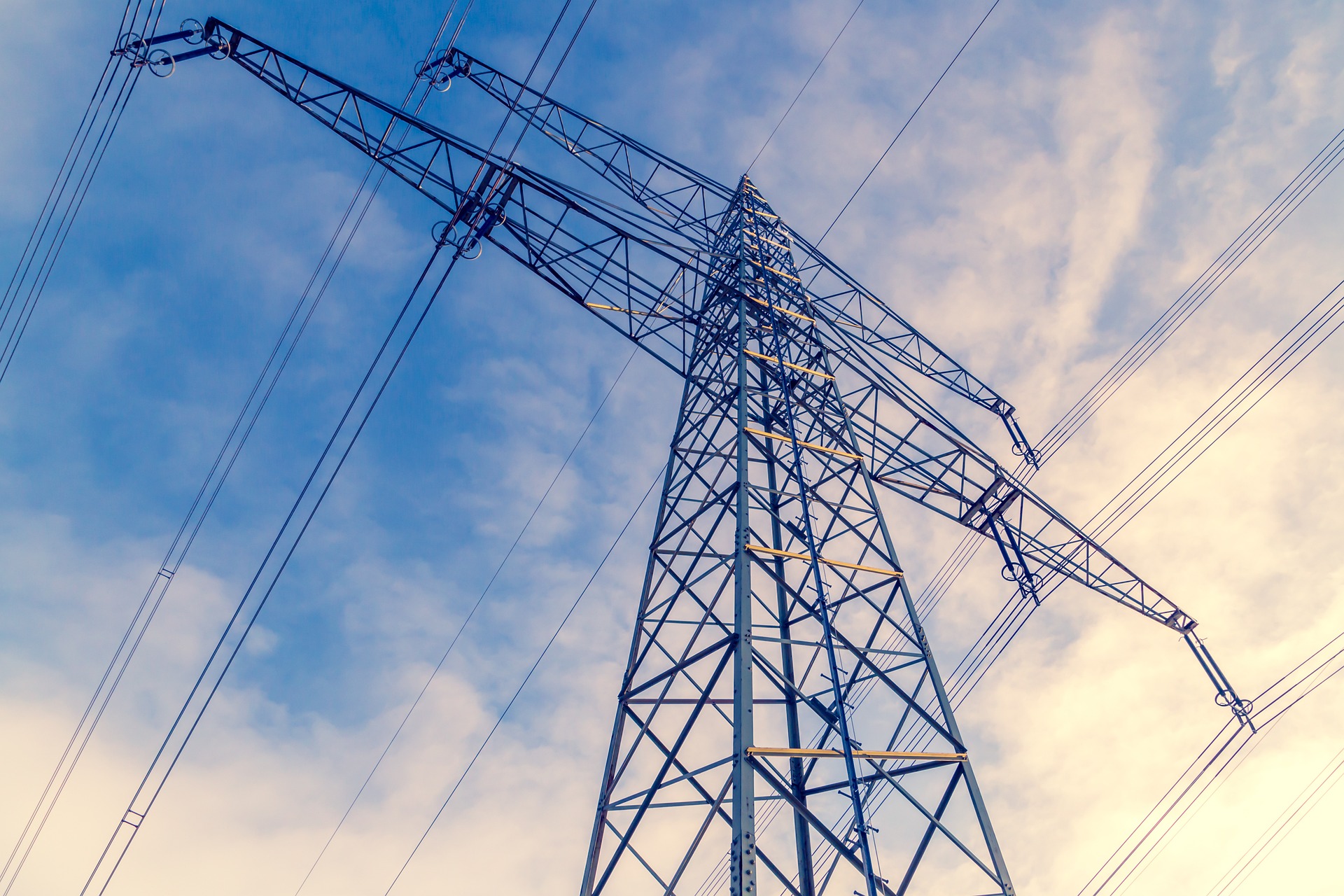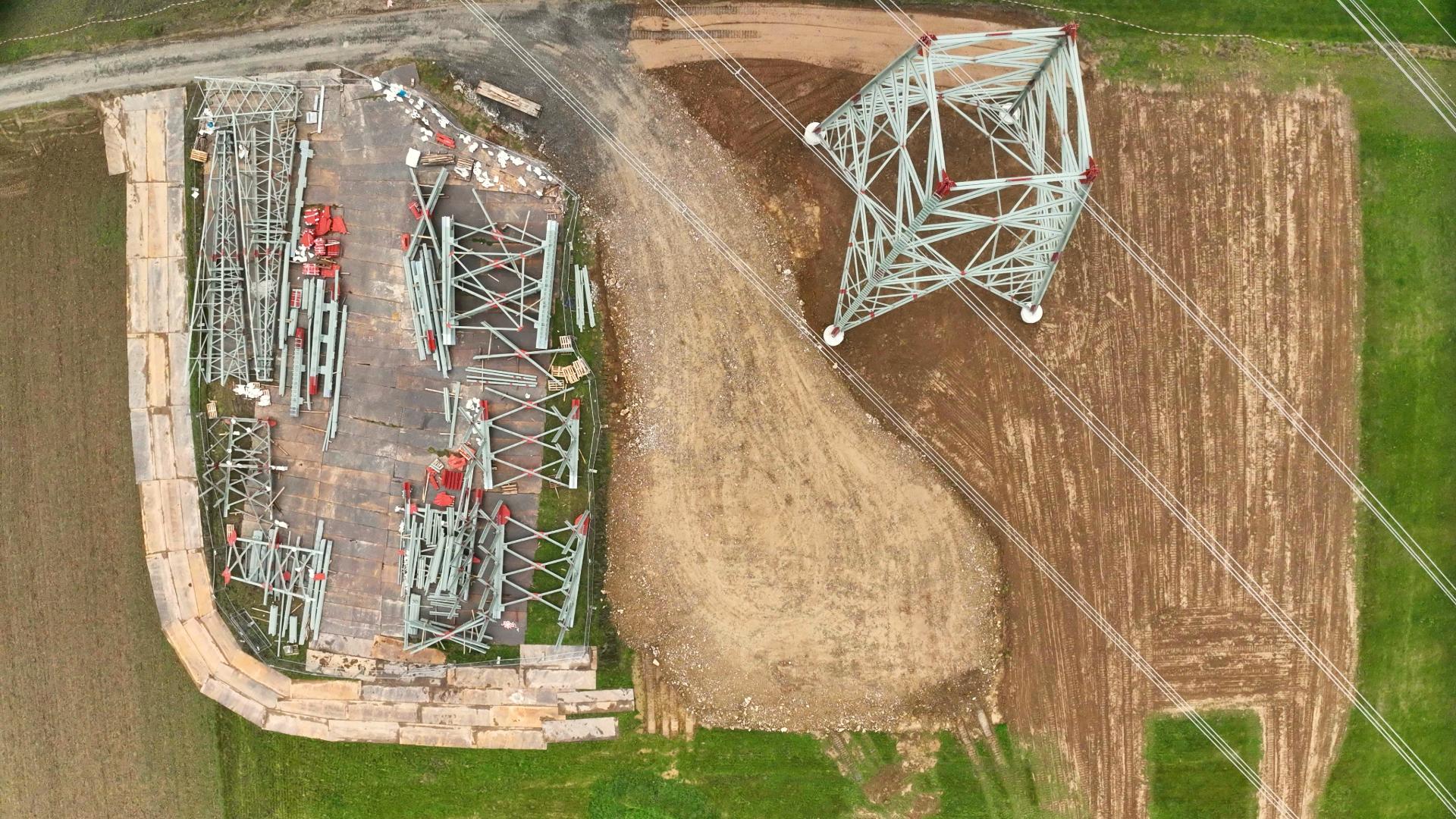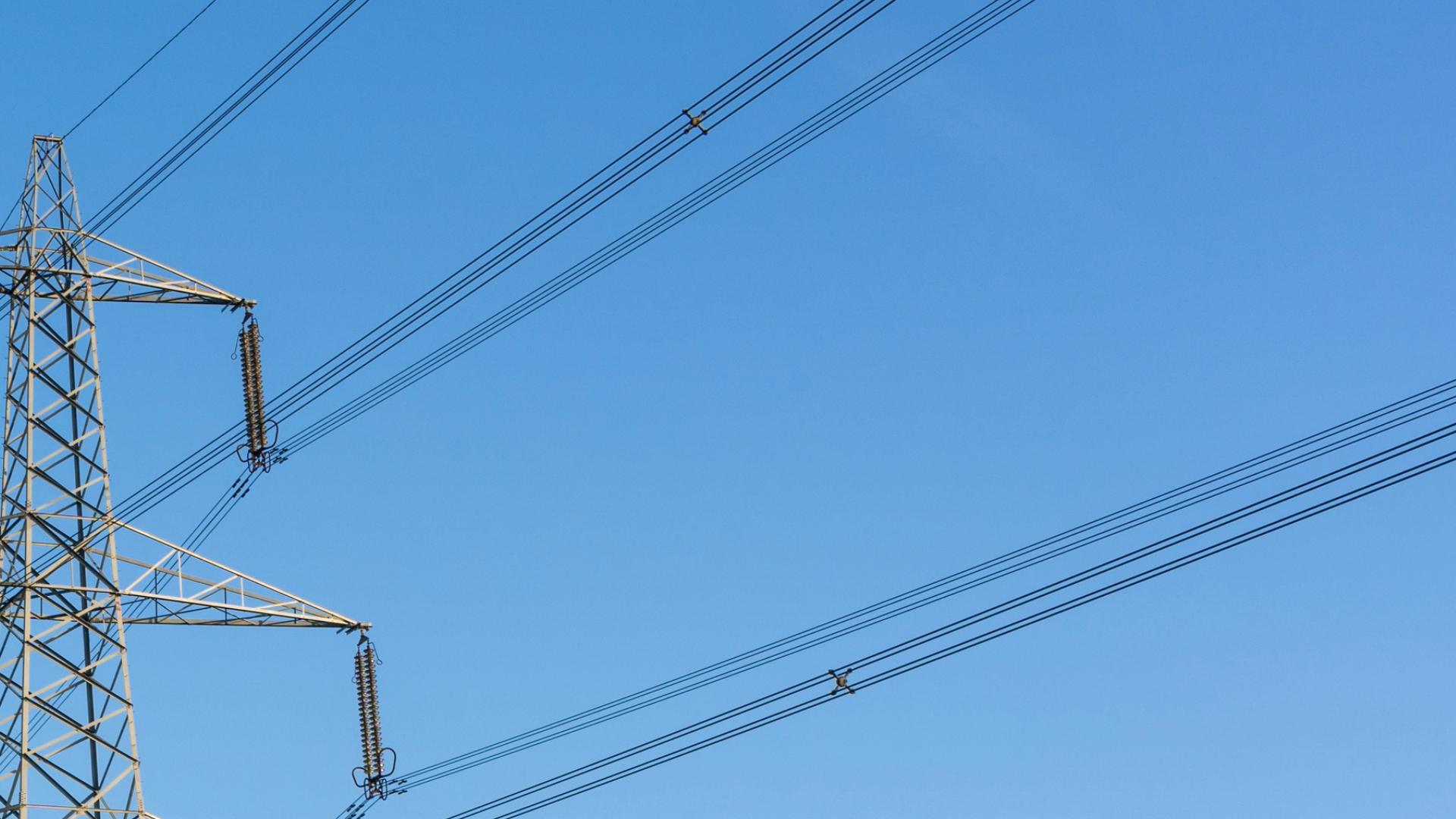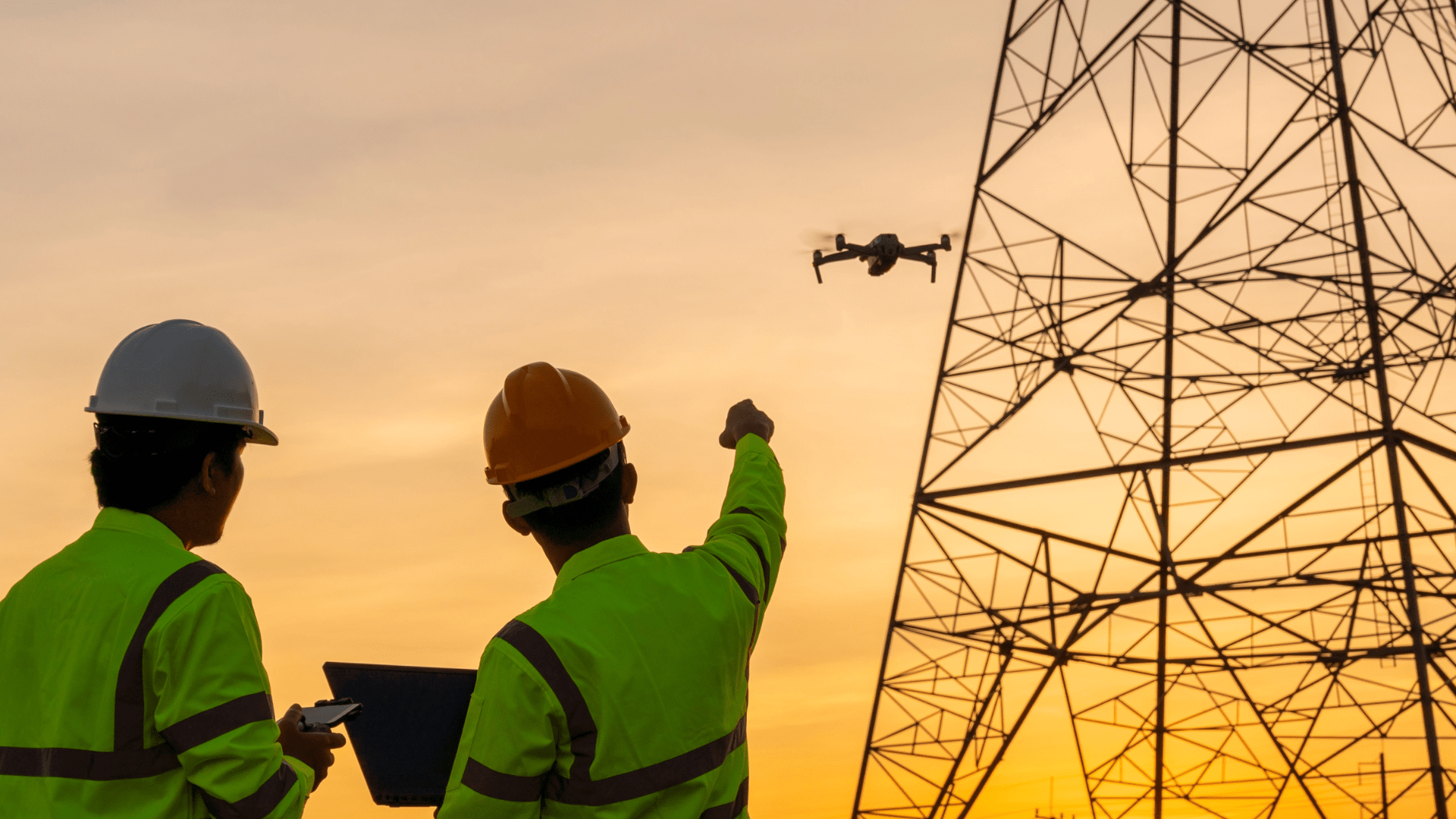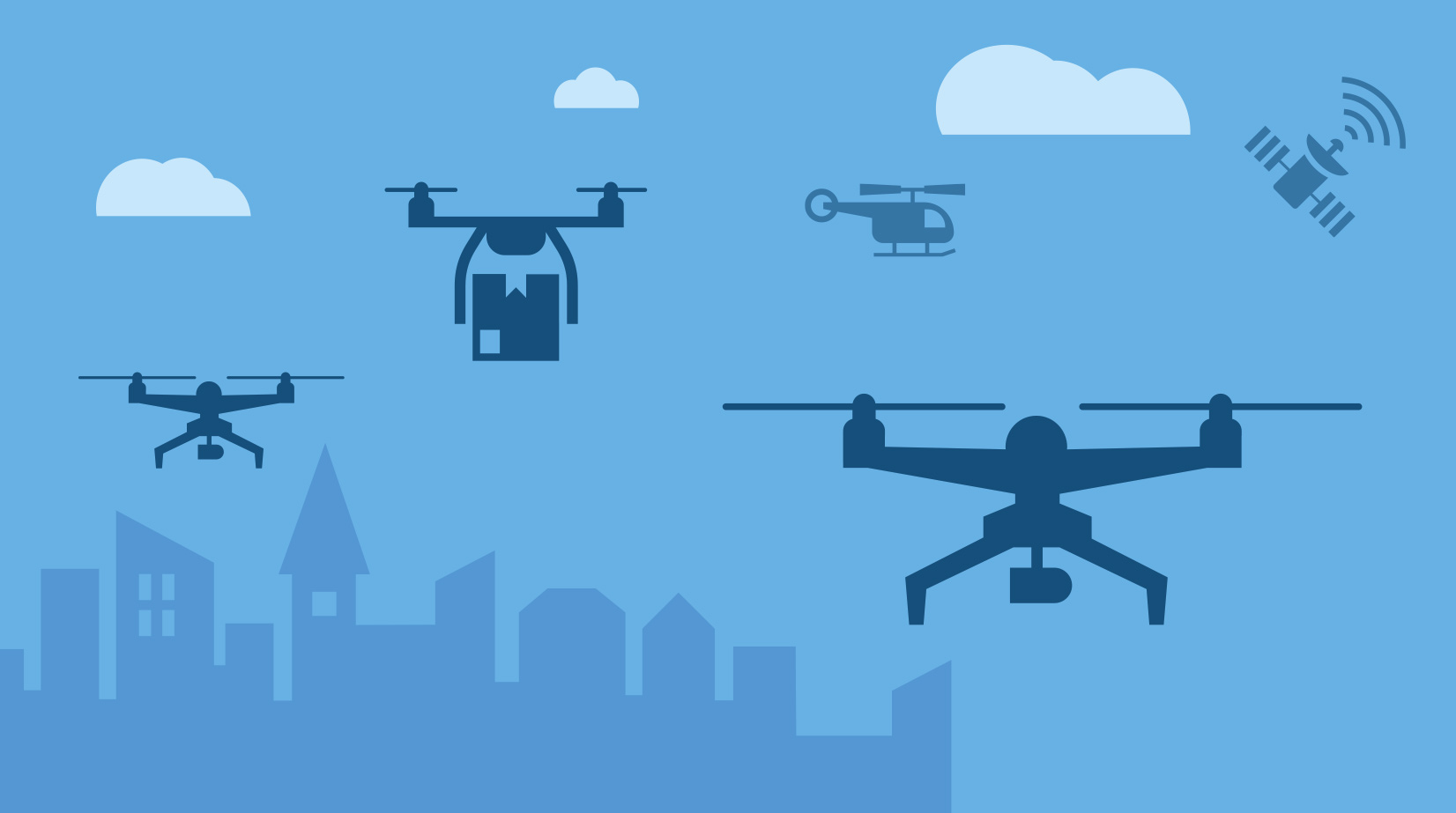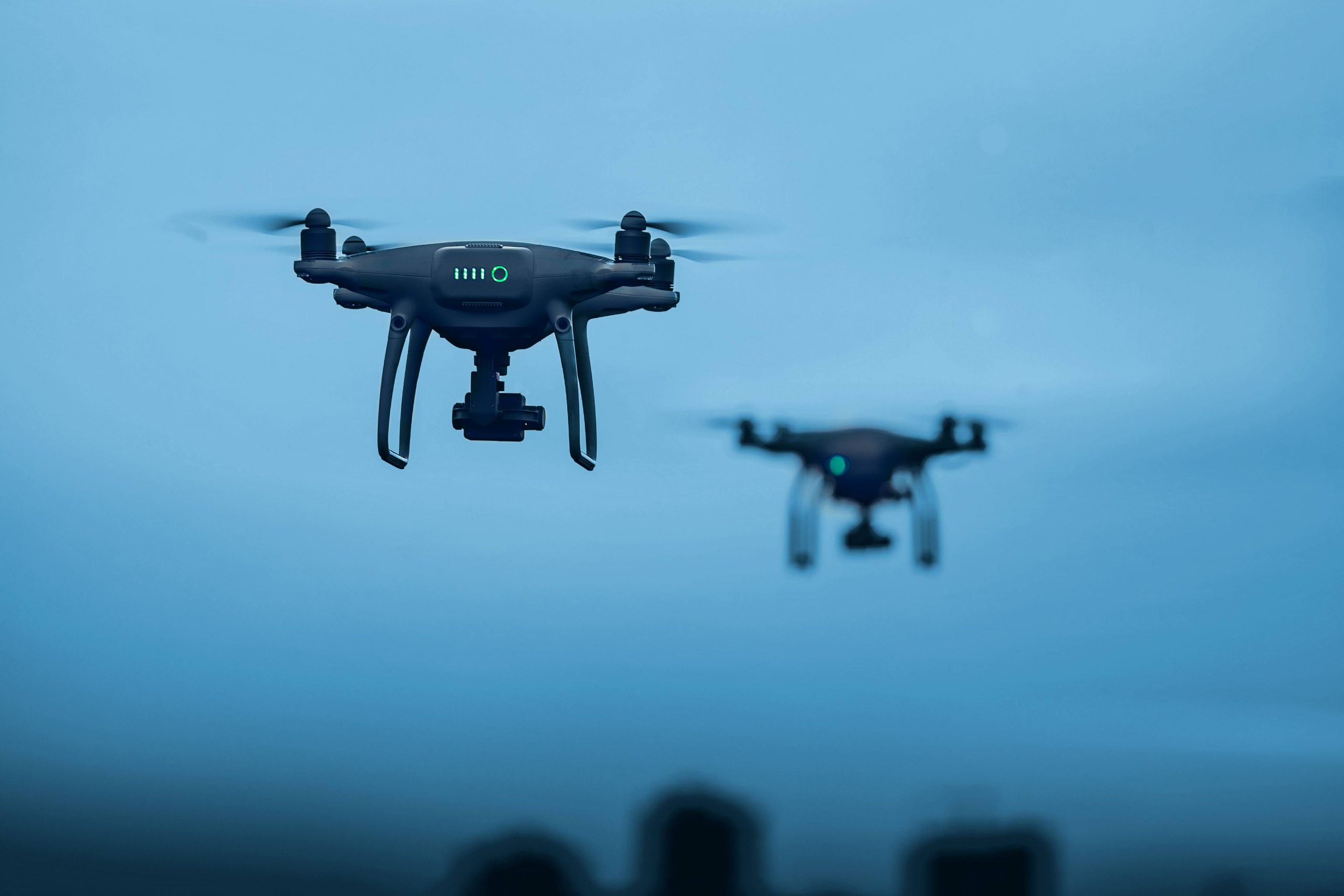Vergangenen Monat sind wir bereits auf die Herausforderungen von Drohneneinsätzen im Anwendungsfall Drohnenlieferungen eingegangen.
Kurz nach der Veröffentlichung unseres Artikels erteilte die amerikanische Luftfahrtbehörde FAA an die Alphabet-Tochter Wing Aviation die Genehmigung für Lieferungen per Drohne.
Integration von Drohnen in die Smart City
Auch in Europa arbeitet Wing Aviation schon an den ersten Lieferungen per Drohne, beispielsweise in Helsinki. Während einige Kunden sich schon freuen, nicht mehr vergeblich auf den Transporter eines Logistikunternehmens warten zu müssen, gibt es hierzulande Stimmen, die daran zweifeln, dass sich Drohnen im urbanen Raum durchsetzen werden.
Wir sind der Meinung, dass Drohnen ein effektives Werkzeug sind und in vielerlei Hinsicht Industrie und Wirtschaft ankurbeln werden, aber machen wir uns nichts vor: Drohnen können im urbanen Raum höchstens unterstützend den Logistikunternehmen dienen. Sie können die bisherige Logistik nicht vollends ersetzen.
Ein Grund hierfür ist das stetige Wachstum im E-Commerce Sektor. Wenn Logistikunternehmen nun versuchen, die Staus auf der Straße zu umgehen und sämtliche Pakete per Drohne auszuliefern, hat das zur Folge, dass es in Städten bald viel lauter wird.
Lautstärke führt zu Stress und Ablehnung von Drohnen
Auf Youtube lassen sich einige Vergleiche zwischen den Betriebsgeräuschen verschiedener Drohnen finden. Wie man sieht, bzw. besser gesagt hört, sind die Drohnen selbst aus 20 Meter Entfernung noch gut hörbar. Die Lautstärke bei 50 Meter Entfernung ist vernachlässigbar, da die Grundlautstärke im urbanen Umfeld höher ist, als auf einem Feld. Manche werden sich sagen, dass Sie Autos und Transporter aus dieser Entfernung auch hören, aber der entscheidende Unterschied ist die Frequenz der Töne. Die kleinen Rotoren müssen sich mit einer hohen Umdrehungszahl drehen, um genug Auftrieb erzeugen zu können. Je mehr Gewicht getragen werden muss, umso schneller müssen sich die Rotoren drehen, so dass schwere Pakete realistisch gesehen nicht von Drohnen ausgeliefert werden können. Hierfür reicht die Nutzlast heutiger Drohnen meist nicht aus. Nicht nur das Gewicht, sondern auch die Größe und Form eines Paketes wird bei Drohnen beschränkt sein. Poster und große Bilderrahmen sind beispielsweise nicht per Drohne lieferbar. Technisch gesehen könnte man natürlich einfach die Rotoren vergrößern, was die Frequenz senken würde. Zudem könnten größere Rotoren langsamer drehen, was die Lautstärke insgesamt senkt. Das steigert jedoch das Gewicht und die Größe einer Drohne. Große, freiliegende Rotoren können außerdem eine lebensbedrohliche Gefahr für Menschen darstellen, wenn diese mit Ihnen in Berührung kommen. Auch diese Gefahr wird leider viel zu häufig unterschätzt.
Die Schallemissionen von Drohnen könnten nach deren Implementierung in das urbane Umfeld zu einem großen Problem werden. Solange andere Geräuschquellen, wie Verbrennungsmotoren oder Baustellen nicht leiser werden, werden Drohneneinsätze im urbanen Raum nur zu einem noch höheren Lärmpegel beitragen und so das Stresslevel der Bevölkerung weiter erhöhen. Zudem ist die hohe Frequenz kleiner Rotoren für das menschliche Gehör besonders unangenehm und störend.
Trendwende vor großflächiger Einführung von Drohnen notwendig
Die technische Evolution der Industrie 4.0 soll jedoch dir Wirtschaft ankurbeln und das Leben erleichtern. Drohnenhersteller sind daher gefordert, die Lautstärke von Drohnen zu reduzieren.
Branchenprimus DJI ist sich dieser Problematik bewusst und hat bereits geräuschärmere Rotoren u.a. für das Modell Mavic Pro entwickelt. DJI denkt mit. Wir würden uns wünschen, dass alle Hersteller sich anschließen und an die Lautstärkeemissionen denken und dementsprechend ihre Drohnen so leise, wie möglich gestalten.
Wir sind uns bewusst, dass die Integration von Drohnen in den urbanen Lebensraum kein einfaches Unterfangen wird. Neben den Gesetzen und Anforderungen des Umfeldes und des genutzten Luftraumes gibt es vielerlei Dinge, die beachtet werden müssen. Die Geräuschminimierung ist für die Hersteller mit Sicherheit kein leichtes Unterfangen, aber der Lärm, den derzeit erhältliche Drohnen erzeugen, ist ein nicht zu vernachlässigender Faktor für die Abneigung gegenüber Drohneneinsätzen.
Drohnen sind ein Kann, kein Muss
Nur weil es technisch möglich ist, Drohnen für kleinere Paketlieferungen zu nutzen, bedeutet das nicht, dass man nun in jeder Stadt tausende von Drohnen sehen muss, die mit ohrenbetäubendem Lärm Internetbestellungen transportieren. Bei der Geräuschentwicklung aktueller Drohnen muss viel mehr vor einem Drohneneinsatz geprüft werden, ob dieser wirklich notwendig ist. Daher glauben wir eher, dass medizinische Lieferungen in naher Zukunft alltäglich werden, da die Zeitersparnis gegenüber einem Transport mit einem Kurier so groß ist, dass gesundheitliche Vorteile durch den Drohneneinsatz entstehen. Weitere Einsatzzwecke, wie bei der Vermessung neuer Bauflächen oder beim Inspizieren von Kraftwerken sind ebenso umsetzbar, ohne die Bevölkerung einer höheren Lärmbelastung auszusetzen. Auch der Einsatz in der Dokumentation des Fortschritts auf Baustellen ist tragbar, da dort meist sowieso ein hoher Geräuschpegel herrscht. Die Betriebsgeräusche einer Drohne würden hier schlichtweg durch den Lärm der anderen Geräte übertönt.
Wie steht es um Lufttaxis?
Diese haben deutlich größere Rotoren, was bedeutet, dass die Betriebsgeräusche in einem niedrigeren Frequenzbereich liegen, als bei kleineren Drohnen. Der Betrieb wäre daher deutlich besser zu ertragen, als wenn viele kleine Drohnen umherschwirren. Die Rotoren eines Lufttaxis müssen sich aber aufgrund des deutlich höheren Gewichtes auch dementsprechend schnell drehen.
Dies wird einen anderen, nicht besonders angenehmen Effekt mit sich bringen, den sog. Downwash (Abwind). So bezeichnet man den Windstoß, den Rotoren unterhalb des Fluggeräts erzeugen, damit dieses in der Luft fliegen kann. Je größer die Rotoren sind und je schneller diese sich drehen, umso mehr Wind wird auch nach unten erzeugt. Wer schon einmal unter einem landenden Hubschrauber stand, weiß, dass dieser Wind ziemlich stark ist. Bei einigen Flugtests von Lufttaxis konnte man erkennen, dass auch diese sehr viel Abwind erzeugen. So verlockend und zukunftsweisend die namhaften Hersteller von Lufttaxis ihre Geräte auch bewerben, es bleiben Zweifel an deren Integration in den Luftraum, wie auch in das urbane Umfeld von Metropolen.
Neben einem funktionalem UTM müsste also auch geklärt werden, in welcher Höhe diese fliegen müssten, ohne die Bevölkerung mit ihrem Abwind zu beeinträchtigen und fast noch wichtiger, wo diese Fluggeräte landen dürfen. Umherfliegender Sand oder gar Steine sollen schließlich niemanden verletzen.
Fauna
Die Regeln und Vorsichtsmaßnahmen im urbanen Umfeld gelten nicht in gleicher Weise für ländlichere Regionen. Die Bevölkerungsdichte ist geringer und der Drohneneinsatz einfacher zu gestalten. Andersrum beeinflussen Drohnen leider auch die Tierwelt und so muss auch darauf geachtet werden, dass der Luftverkehr von Drohnen in weniger dicht besiedelten Gebieten nicht die Fauna aus dem Gleichgewicht bringt.
Ausblick
Wir als FlyNex möchten sicherstellen, dass Drohnen bewusst und effizient eingesetzt werden. Unser Beitrag dazu sind unsere Softwareangebote HORIZON und MAP2FLY. Durch den Einsatz unserer Software ist es möglich, Flüge so zu planen, dass der Flugplan validiert werden kann und in diesem Zuge eine Flugroute vom Gesetzesgeber autorisiert werden kann. Zusätzlich bieten wir die Möglichkeit, Drohneneinsätze softwareseitig in bestehende Arbeitsprozesse zu integrieren. So kann deren Einsatz noch besser dokumentiert werden und die durch die Drohne erhobenen Bilddaten können zur Auswertung direkt über unsere Lösung an die zuständigen Mitarbeiter weitergeleitet werden.
Die Hürden, die genommen werden müssen, um Drohnen erfolgreich in die Mobilität der Zukunft zu integrieren, sind umfangreich, aber nicht unüberwindbar. Solange Drohneneinsätze mit Bedacht stattfinden und deren Einsatz vorher zwecks seiner Sinnhaftigkeit überprüft wird, glauben wir, dass die Vorteile überwiegen werden. Die Akzeptanz in der Bevölkerung, sowie deren uneingeschränkte Sicherheit sind sehr wichtige Faktoren bei der Integration von Drohnen in den Alltag. Diese Akzeptanz geht nur einher, wenn Drohnen durch ihren Betrieb keinen ohrenbetäubenden Lärm verursachen. Drohnenhersteller sollten daher alles daransetzen, die Betriebsgeräusche ihrer unbemannten Fluggeräte so niedrig, wie möglich zu halten.
Ihr FlyNex Team
